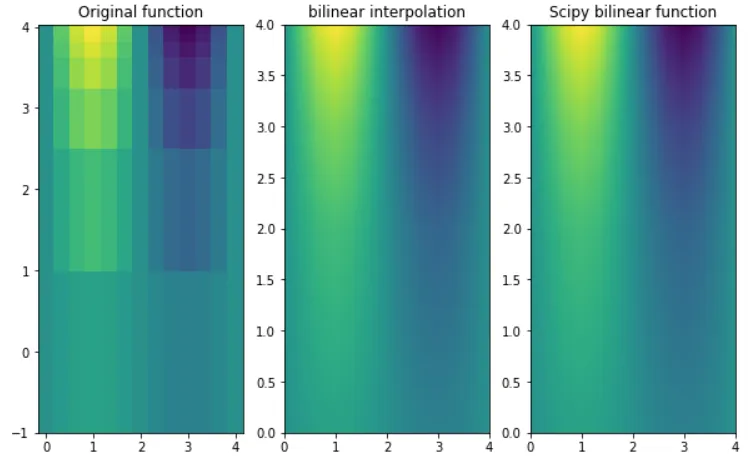我希望使用Python进行双线性插值。
我要插值的示例GPS点是:
我想感谢那些即使在这个问题发表十多年后仍然给予新答案的人们。
我要插值的示例GPS点是:
B = 54.4786674627
L = 17.0470721369
使用已知坐标和高度值的四个相邻点:
n = [(54.5, 17.041667, 31.993), (54.5, 17.083333, 31.911), (54.458333, 17.041667, 31.945), (54.458333, 17.083333, 31.866)]
z01 z11
z
z00 z10
import math
z00 = n[0][2]
z01 = n[1][2]
z10 = n[2][2]
z11 = n[3][2]
c = 0.016667 #grid spacing
x0 = 56 #latitude of origin of grid
y0 = 13 #longitude of origin of grid
i = math.floor((L-y0)/c)
j = math.floor((B-x0)/c)
t = (B - x0)/c - j
z0 = (1-t)*z00 + t*z10
z1 = (1-t)*z01 + t*z11
s = (L-y0)/c - i
z = (1-s)*z0 + s*z1
z01 z0 z11
z
z00 z1 z10
我想感谢那些即使在这个问题发表十多年后仍然给予新答案的人们。


